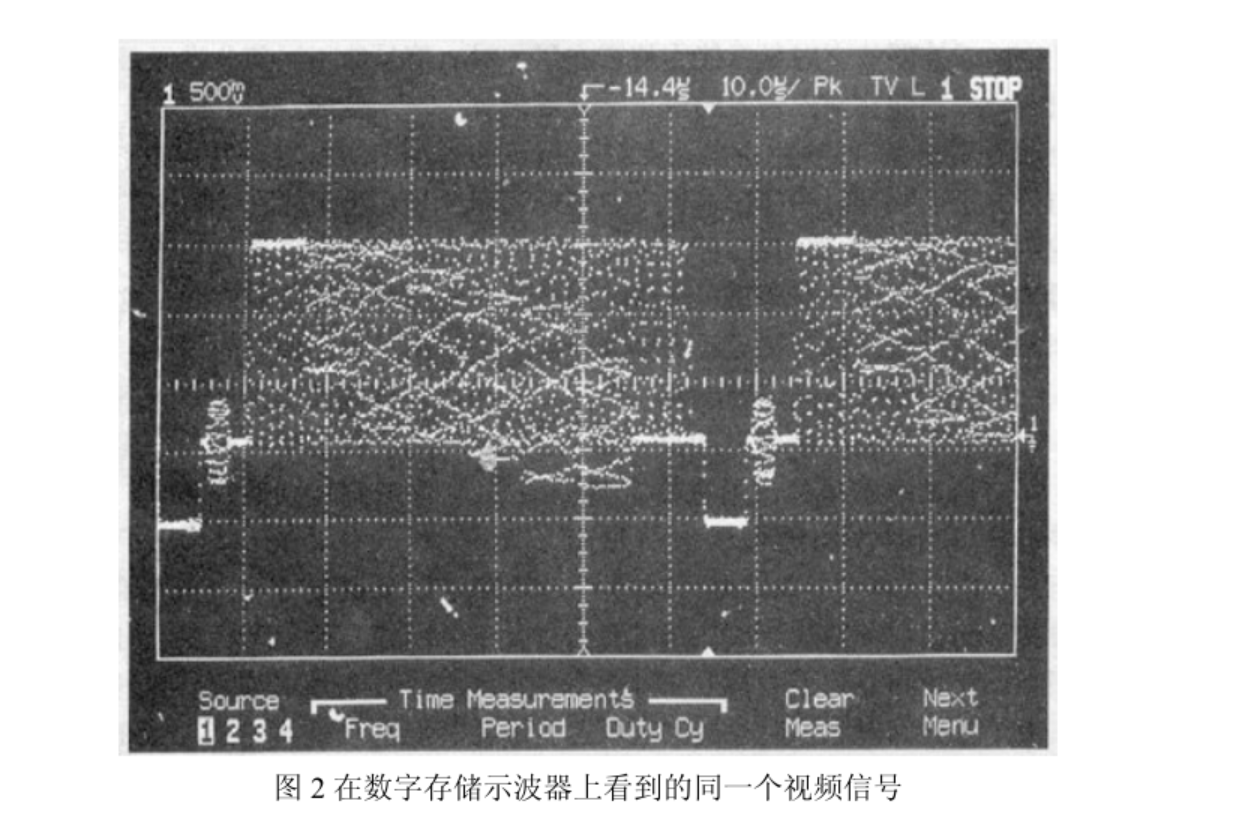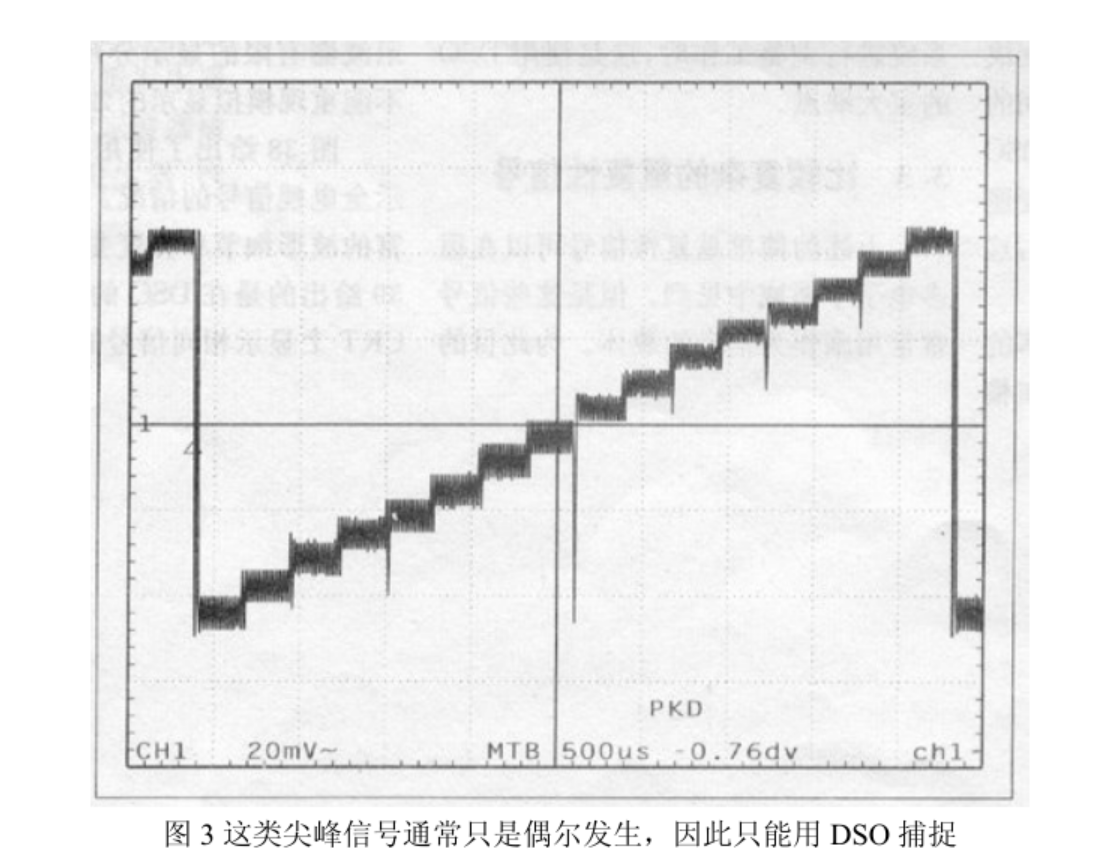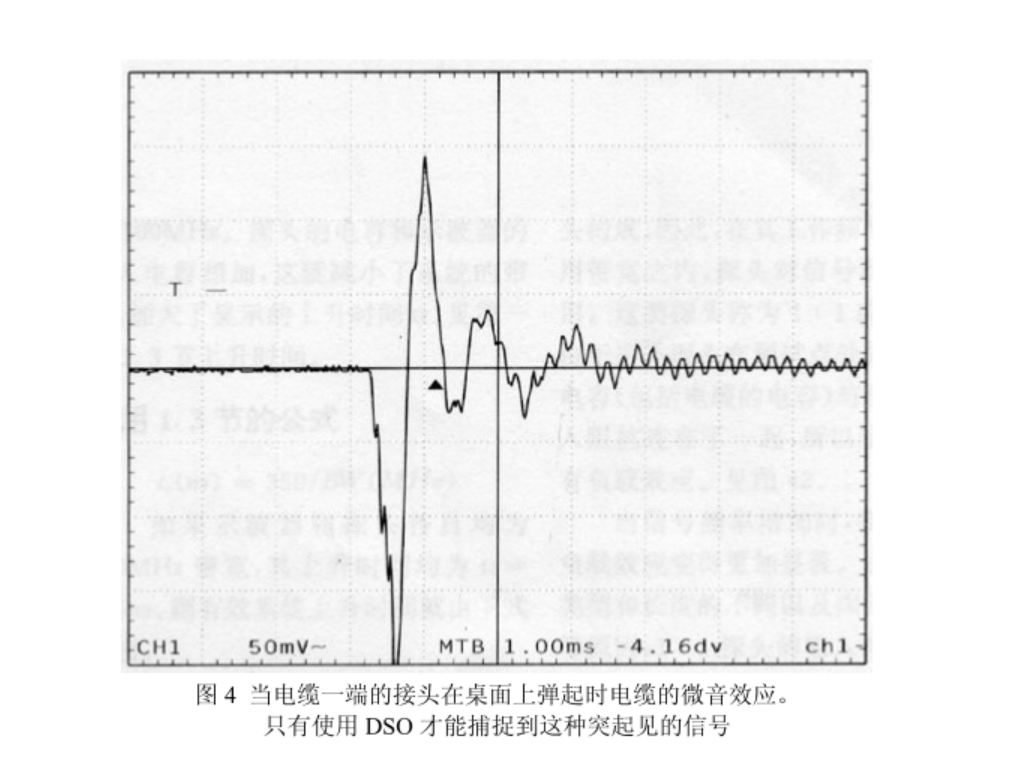How to choose an oscilloscope-difference between analog and digital oscilloscopes
I. Introduction
When considering the purchase of a new oscilloscope, users often ask many questions. For example, which oscilloscope should be selected? How wide a bandwidth is needed? Analog oscilloscope can meet the needs of the work? Another question people often ask is: "DSO can meet my work needs? "In other words, can the DSO do all the measurements I was doing with an analog oscilloscope?
Unfortunately there is not a concise answer to all these questions. The answer to the question depends entirely on the measurement work to be performed and the signal to be measured. In some cases analog oscilloscopes are better than the existing DSO, now let us examine some of the main principles of thinking.
II. Simple Repetitive Signals
Using analog oscilloscopes and DSOs are usually very good at observing simple repetitive signals. But both have their advantages and limitations. For the analog oscilloscope, because of the CRT afterglow time is very short, so it is difficult to display the signal at very low frequencies. Since the brightness of the sweep trace on the oscilloscope is inversely proportional to the scanning speed, it is difficult to see low repetition rate signals with fast rise and fall times. The sweep brightness and scan speed of the DSO are independent of the signal repetition rate. This feature can be an advantage or a disadvantage as the signal under test varies.
There is little difference in performance between DOS and analog oscilloscopes for displaying fast edges of repetitive signals with sufficiently high repetition rates. Signal waveforms can be observed well with both types of oscilloscopes. The DSO has the advantage of automatic measurement capability when signal parameters are to be measured. When using an analog oscilloscope, the user must set the cursor and analyze and understand the displayed waveform to get the measurement results.
The user must set the cursor and analyze and understand the displayed waveform to get the measurement result.
If you want to make adjustments, it is usually better to use an analog oscilloscope. This is because the analog oscilloscope's real-time display capability makes it possible to display the input voltage at every moment. Its waveform update rate (the number of sweeps traced on the screen per second) is very high, at high scan speeds can be well over 100,000 scans per second. So any change in the signal is immediately displayed. And some consular changes will be shown on the display screen in the form of waveform brightness changes.
In contrast to analog oscilloscopes, the DSO displays a waveform reconstructed from the acquired waveform data. The number of flashes per second is well below 100. On some oscilloscopes, the number of times a waveform is acquired per second exceeds 5. As a result, there is a significant time delay between when the signal changes and when the changed signal is displayed on the screen. When the system is adjusted to work, this is a major disadvantage of using DSO.
III. More complex repetitive signals
The simple repetitive signals described above can be found in many fields of electronics, but they are often used as carriers of information. They can take many forms for this purpose, such as sine, impulse, ramp or step waves, and multiple modulated signals and multiple modulation methods can often be used simultaneously.
A common example of a complex analog signal is the full TV signal. This signal consists of multiple components of different frequencies and amplitudes, including both pulses and sine waves, plus additional sine waves that are phase shifted to represent color information. In such cases, analog oscilloscopes have their own particular advantages, each providing the best view of different parts of the signal.
For example, the analog oscilloscope has a limited resolution and a high number of scans per second, it can show the waveform at the time stop on the waveform scan of this degree of change is proportional to the signal at a particular duration, which is a good indication of color modulation.
Because the oscilloscope has a high waveform update rate (high number of scans per second), it can immediately show the results of adjustments to the system. When using a DSO, the limited number of sampling points and the lack of luminance variation make it impossible to display many waveform details, although some DSOs may have two or more luminance levels, but this is only a relative difference, coupled with the limited display resolution of the oscilloscope, so it still can not reproduce the effect of analog display. (Figure 1) shows the use of an analog oscilloscope to display a full TV signal. Note the rich waveform detail and brightness variations. (Figure 2) shows the same signal on a typical raster-scan CRT with a DSO


If only a small portion of a video signal is displayed, such as a TV transmission test signal in a particular line, graphic TV data or a group of color pulses on a particular line, then DSO is preferred. If an analog oscilloscope is used, the relatively low repetition rate of the signal, combined with the short duration of the portion of the signal to be observed, can easily make the display too dark and difficult to see. DSO, on the other hand, has a consistent brightness regardless of the repetition rate of the signal, and thus can display the signal at a high level. If the repetitive shallow shape also contains a narrow width of spikes or burrs, then it is impossible to see these types of peaks or burrs using an analog oscilloscope to observe the entire waveform. When DSO is used, these spikes can be displayed using peak detection (see Figure 3).
Fourth, non-repetitive signals and transients
In the past, many observations of non-repetitive signals and transients had to be promised because they were extremely difficult and expensive to observe, because at that time, the observation of such signals required the use of expensive analog storage oscilloscopes, cameras and long afterglow oscilloscopes.
If an event occurs only once, then the analog oscilloscope is usually not able to cope. This is where the DSO demonstrates its power to capture that rare one-time event and display it for as long as you want. This rare event may even be the result of a disturbance, and by using the disturbance itself to trigger, the DSO has the ability to display pre-trigger information, including the cause of the disturbance. Figure 4 shows the microphonic effect waveform of a cable when an open circuit at one end of the cable is bounced on the table.

Five, analog oscilloscope, digital oscilloscope, or both
We have seen that in their daily work technicians need both analog oscilloscopes and digital storage oscilloscopes in order to have the best view of the signals they encounter in their work, in some applications analog oscilloscopes are more appropriate, while in other cases DSO is a better choice. Some DSOs seen on the market claim to have the "look and feel of an analog oscilloscope". But these are pure DSOs, although some of them have control mechanisms arranged exactly like many analog oscilloscopes, and others have high scan update rates to mimic the capabilities of a real analog oscilloscope.
Or, they may have high sampling rates while acquiring waveforms with limited record length, thus not having the time resolution needed to observe more complex signals and avoid artifactual signals, of course, these oscilloscopes not only have the advantages of DSO, but also have all the disadvantages of DSO. Thankfully, there is now an oscilloscope that can truly combine the capabilities and advantages of both analog oscilloscopes and DSOs in one instrument. This is the combination oscilloscope, combination oscilloscope to a high-performance analog oscilloscope together, and can easily switch from one mode of operation to another.
The technician chose the combination oscilloscope means, as long as the oscilloscope is enough shame, no matter what his work needs, he always has the right tool at hand. When the instrument is set up as a DSO, the user can use it to perform automatic parameters, measurements, storage of the acquired waveform to create a hard test; and at the same time, when needed, it can also have the infinite resolution of analog oscilloscopes and familiar and credible waveform display, and when using the combination oscilloscope, regardless of the signal repetition rate, you can get the brightest display, in other words, the combination oscilloscope used to In other words, the combination oscilloscope uses the best of both analog oscilloscope and DSO in one.
I. Introduction
When considering the purchase of a new oscilloscope, users often ask many questions. For example, which oscilloscope should be selected? How wide a bandwidth is needed? Analog oscilloscope can meet the needs of the work? Another question people often ask is: "DSO can meet my work needs? "In other words, can the DSO do all the measurements I was doing with an analog oscilloscope?
Unfortunately there is not a concise answer to all these questions. The answer to the question depends entirely on the measurement work to be performed and the signal to be measured. In some cases analog oscilloscopes are better than the existing DSO, now let us examine some of the main principles of thinking.
II. Simple Repetitive Signals
Using analog oscilloscopes and DSOs are usually very good at observing simple repetitive signals. But both have their advantages and limitations. For the analog oscilloscope, because of the CRT afterglow time is very short, so it is difficult to display the signal at very low frequencies. Since the brightness of the sweep trace on the oscilloscope is inversely proportional to the scanning speed, it is difficult to see low repetition rate signals with fast rise and fall times. The sweep brightness and scan speed of the DSO are independent of the signal repetition rate. This feature can be an advantage or a disadvantage as the signal under test varies.
There is little difference in performance between DOS and analog oscilloscopes for displaying fast edges of repetitive signals with sufficiently high repetition rates. Signal waveforms can be observed well with both types of oscilloscopes. The DSO has the advantage of automatic measurement capability when signal parameters are to be measured. When using an analog oscilloscope, the user must set the cursor and analyze and understand the displayed waveform to get the measurement results.
The user must set the cursor and analyze and understand the displayed waveform to get the measurement result.
If you want to make adjustments, it is usually better to use an analog oscilloscope. This is because the analog oscilloscope's real-time display capability makes it possible to display the input voltage at every moment. Its waveform update rate (the number of sweeps traced on the screen per second) is very high, at high scan speeds can be well over 100,000 scans per second. So any change in the signal is immediately displayed. And some consular changes will be shown on the display screen in the form of waveform brightness changes.
In contrast to analog oscilloscopes, the DSO displays a waveform reconstructed from the acquired waveform data. The number of flashes per second is well below 100. On some oscilloscopes, the number of times a waveform is acquired per second exceeds 5. As a result, there is a significant time delay between when the signal changes and when the changed signal is displayed on the screen. When the system is adjusted to work, this is a major disadvantage of using DSO.
III. More complex repetitive signals
The simple repetitive signals described above can be found in many fields of electronics, but they are often used as carriers of information. They can take many forms for this purpose, such as sine, impulse, ramp or step waves, and multiple modulated signals and multiple modulation methods can often be used simultaneously.
A common example of a complex analog signal is the full TV signal. This signal consists of multiple components of different frequencies and amplitudes, including both pulses and sine waves, plus additional sine waves that are phase shifted to represent color information. In such cases, analog oscilloscopes have their own particular advantages, each providing the best view of different parts of the signal.
For example, the analog oscilloscope has a limited resolution and a high number of scans per second, it can show the waveform at the time stop on the waveform scan of this degree of change is proportional to the signal at a particular duration, which is a good indication of color modulation.
Because the oscilloscope has a high waveform update rate (high number of scans per second), it can immediately show the results of adjustments to the system. When using a DSO, the limited number of sampling points and the lack of luminance variation make it impossible to display many waveform details, although some DSOs may have two or more luminance levels, but this is only a relative difference, coupled with the limited display resolution of the oscilloscope, so it still can not reproduce the effect of analog display. (Figure 1) shows the use of an analog oscilloscope to display a full TV signal. Note the rich waveform detail and brightness variations. (Figure 2) shows the same signal on a typical raster-scan CRT with a DSO


If only a small portion of a video signal is displayed, such as a TV transmission test signal in a particular line, graphic TV data or a group of color pulses on a particular line, then DSO is preferred. If an analog oscilloscope is used, the relatively low repetition rate of the signal, combined with the short duration of the portion of the signal to be observed, can easily make the display too dark and difficult to see. DSO, on the other hand, has a consistent brightness regardless of the repetition rate of the signal, and thus can display the signal at a high level. If the repetitive shallow shape also contains a narrow width of spikes or burrs, then it is impossible to see these types of peaks or burrs using an analog oscilloscope to observe the entire waveform. When DSO is used, these spikes can be displayed using peak detection (see Figure 3).
Fourth, non-repetitive signals and transients
In the past, many observations of non-repetitive signals and transients had to be promised because they were extremely difficult and expensive to observe, because at that time, the observation of such signals required the use of expensive analog storage oscilloscopes, cameras and long afterglow oscilloscopes.
If an event occurs only once, then the analog oscilloscope is usually not able to cope. This is where the DSO demonstrates its power to capture that rare one-time event and display it for as long as you want. This rare event may even be the result of a disturbance, and by using the disturbance itself to trigger, the DSO has the ability to display pre-trigger information, including the cause of the disturbance. Figure 4 shows the microphonic effect waveform of a cable when an open circuit at one end of the cable is bounced on the table.

Five, analog oscilloscope, digital oscilloscope, or both
We have seen that in their daily work technicians need both analog oscilloscopes and digital storage oscilloscopes in order to have the best view of the signals they encounter in their work, in some applications analog oscilloscopes are more appropriate, while in other cases DSO is a better choice. Some DSOs seen on the market claim to have the "look and feel of an analog oscilloscope". But these are pure DSOs, although some of them have control mechanisms arranged exactly like many analog oscilloscopes, and others have high scan update rates to mimic the capabilities of a real analog oscilloscope.
Or, they may have high sampling rates while acquiring waveforms with limited record length, thus not having the time resolution needed to observe more complex signals and avoid artifactual signals, of course, these oscilloscopes not only have the advantages of DSO, but also have all the disadvantages of DSO. Thankfully, there is now an oscilloscope that can truly combine the capabilities and advantages of both analog oscilloscopes and DSOs in one instrument. This is the combination oscilloscope, combination oscilloscope to a high-performance analog oscilloscope together, and can easily switch from one mode of operation to another.
The technician chose the combination oscilloscope means, as long as the oscilloscope is enough shame, no matter what his work needs, he always has the right tool at hand. When the instrument is set up as a DSO, the user can use it to perform automatic parameters, measurements, storage of the acquired waveform to create a hard test; and at the same time, when needed, it can also have the infinite resolution of analog oscilloscopes and familiar and credible waveform display, and when using the combination oscilloscope, regardless of the signal repetition rate, you can get the brightest display, in other words, the combination oscilloscope used to In other words, the combination oscilloscope uses the best of both analog oscilloscope and DSO in one.







